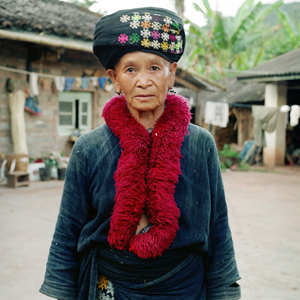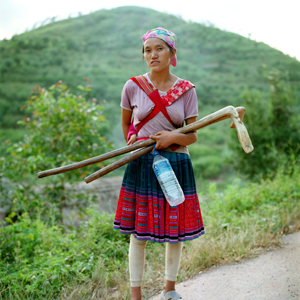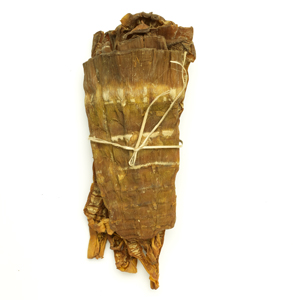The project with no name
By Tessa Bunney on 22 December 2009It’s been a couple of months since my return from China and I’ve been a bit busy with freelance work and doing talks about my work around the country. Personal projects are very needy in terms of energy, concentration and creativity as well as financially so its been nice in a way to step back from it for a while and earn some cash and as always freelance work takes you to places and meet people who you had never planned to!
Things are quietening now in the run up to Christmas and all the shopping is done so I thought it would be good to put up a post about October’s trip to China.
In a way I never really set out to do a project about China and in many ways it’s not really about China at all. I first travelled to Yunnan province when we were living in Vietnam – Kunming being just an hours flight from Hanoi. The second trip was to conclude something I hadn’t quite done to my satisfaction. Now of course the place and the people have got into my head!
I don’t know if it is just me, but working in China is hard work. Everything – travelling and communication particularly. Luckily my well trained iron gut held up fine to the change in diet and often dubious looking hygiene standards. In fact, food is a particular highlight of travelling in Yunnan.
For this trip, I was accompanied by my guide and translator from previous trips Ilian. Ilian is Bulgarian but has lived in China on and off for many years. I like working with guides who are not native because there is not the same pressure on them to give foreigners a totally positive view of the country. For this project I am interested in working with the ethnic minority* women and doing a piece of work which takes a look at the people and places left behind in the mad rush for modernisation and the effects on the countryside.
* PRC officially recognises 55 ethnic minority groups in China in addition to the Han majority. The ethnic minorities are 9.44% of mainland China and Taiwan’s total population and the greatest number can be found in Yunnan province, 34% (25 ethnic groups).
Going back to translators…. During this trip we regularly met people from at least 6 different minorities none of whom can communicate directly with each other except in Mandarin. Ilian and I travel by bus between the big places and then hire a car and driver to get to the more isolated places. Usually we try to find a minority driver who can communicate directly with the families we visit but for some reason this time this proved difficult. When I got back I realised how ridiculous this was getting when I thought about how at one point I asked something to Ilian who asked something to the driver who spoke to the man of the house in Yunnan dialect who then spoke to the women in their local language (most of the older women in isolated areas still only speak in their own language).
So this has prompted me to hire a Miao guide/translator to travel in the predominantly Miao area I am planning to visit next year. But even then I’m not sure whether he can communicate directly with all the sub-groups.
This is slow work but I am happy to share my work in progress and welcome comments about it on this blog. It would great to have more time and money to dedicate to this work but in the absence of these two essentials I am practising the art of what Rob Hornstra calls ‘slow journalism’ (take a look at http://www.thesochiproject.org).
There are some stunning landscapes in Yunnan – both natural and man-made.
This trip started in Jinghong the capital of the Xishuangbanna Region (which borders Myanmar (Burma), Laos and Vietnam) and during the 4 hour bus journey to Mengla I was quite shocked to see mile after mile of hillsides covered in rubber trees for making car tyres – an industry of immense value. While rubber plantations have helped the growth of the Chinese economy it has been at a massive cost to the environment – they are the biggest threat to Yunnan’s incredibly diverse and unique forests.
Later that day we ended up in Jin Long village, probably the most southerly village in Yunnan, very close to the Laos border – where we met Pan Ying Yao, a Yao minority woman, one of only 4 women to make and still wear traditional clothing on a daily basis in this village.
Traditional costumes vary in style and decoration, according to geographical location. The costume identifies the minority and subgroup to which the wearer belongs and also indicates her position within it, denoting for example, her marital status.
“As a consequence of the rapid social changes taking place in China, many of the minority textile techniques are in danger of dying out as they are no longer being passed on to the present generation. Today, unlike their predecessors, minority girls go to school and instead of acquiring the traditional craft skills, have different priorities.” Ruth Smith, Minority Textile Techniques: Costumes from South West China).
I’m fascinated by clothing and this becomes a recurring theme in my work.
During this trip, I took along my laptop and scanner so that I could scan fabrics and clothing in people’s homes (and sometimes in the market place! – see photo below).
These places have recently had their roads upgraded from dirt to stone and some eventually to tarmac but in places mud slides often occur especially in the rainy season.
I must admit that sometimes I have to wonder exactly what I am doing. This was when we had to get off the bus to allow it to drive through the mud slide behind a queue of several buses that had built up behind another bus which had got stuck. And that was nothing in scariness to the smaller muddy roads where the bus driver just carried on driving through whilst smoking or talking on his mobile phone on the edge of a sheer drop down to the river!
Although I work a lot on intuition, I took along a sheet of images of the type of things I was interesting in tracking down and a small book of photos from my previous trip which was invaluable to helping people to understand what I was doing. It was fascinating to discover that most people know very little about what is happening in their own province – the cormorant fishing near Dali caused particular interest in some places who had no idea this existed! And yet we can see a well-known cormorant fisherman advertising a bank on our TV’s every night!!
This is a project which needs time, time to spend with people, there seemed to be a lot of talk about giving people ‘face’ which seemed to mean eating a lot of breakfast (for the second time that day!) It was very hard to make a decision to move on from a visually inspiring area if it just wasn’t happening… as a photographer it can be hard to accept that no matter how genuine you are or no matter what you do, the request to photograph something (or more usually in China someone) is refused.
However, I’ve always been amazed as I travel around the world how relatively few times people refuse to be photographed.














